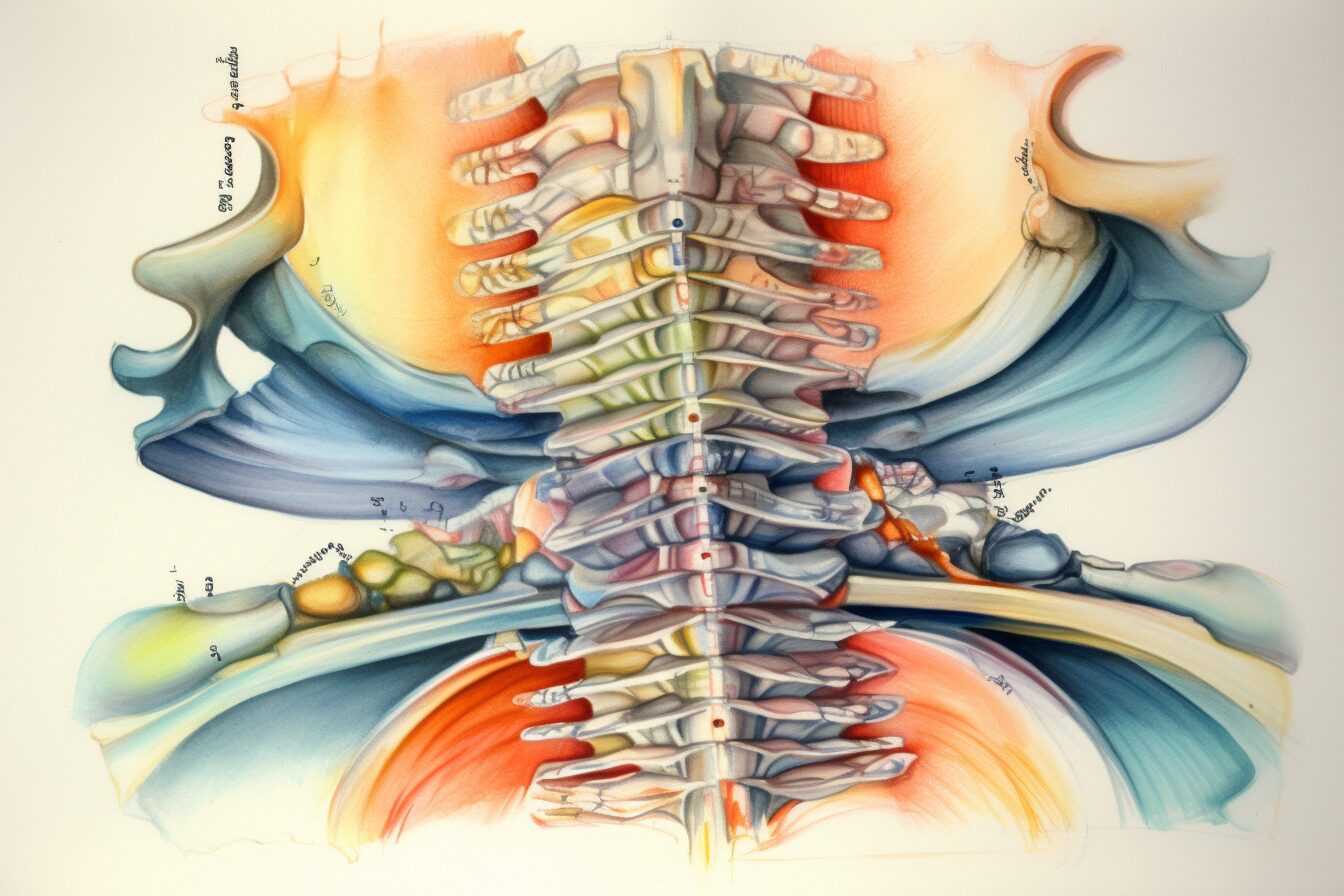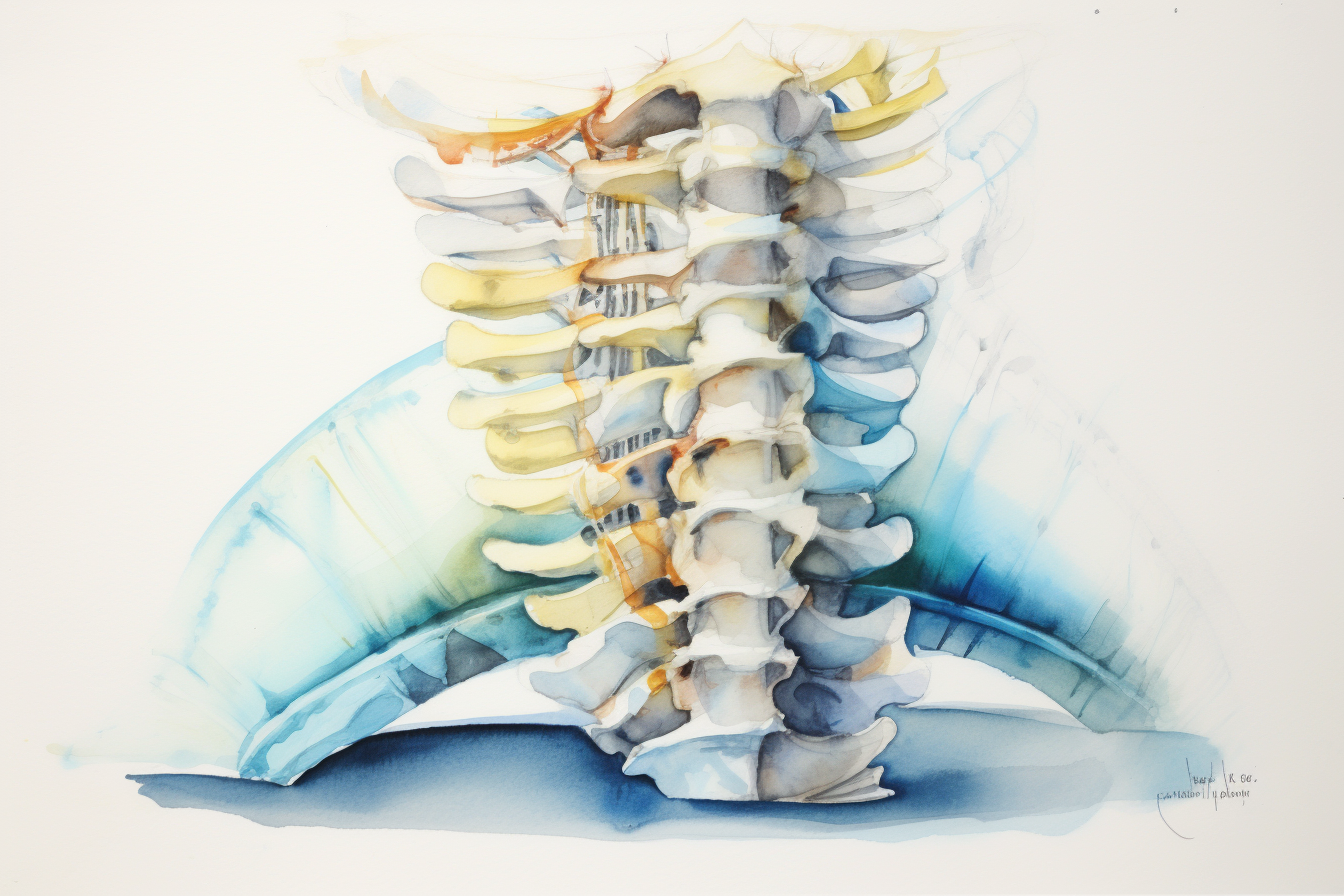Understanding Subluxation of Spine: A Path to Relief
Let's dive straight into the heart of a topic that might be causing you more trouble than you realize: subluxation of spine. This condition, often flying under the radar, can mess with your body in ways you wouldn't expect. Navigating from nerve aggravation to muscular discomfort, it commands our focus for good reason.
In this read, we're going deep into what spinal subluxation is all about—how it happens and why it matters. You'll get the lowdown on everything from common causes like poor posture and physical trauma to how chiropractic care steps in for relief. Additionally, we'll unveil several strategies to avoid these troublesome spinal misalignments before they start.
Stick around because by the end of this journey, you'll not only understand your spine better but also know how to keep things running smoothly for good health and comfort.
Table Of Contents:
- Understanding Spinal Subluxation
- Causes of Spinal Subluxation
- Symptoms of Spinal Subluxation
- Chiropractic Solutions for Spinal Subluxation
- The Science Behind Chiropractic Adjustments
- Lifestyle Changes for Preventing Spinal Subluxation
- Navigating Through Recovery After Correction
- FAQs in Relation to Subluxation of Spine
- Conclusion
Understanding Spinal Subluxation

Imagine your spine as a bustling highway of nerve signals, ensuring every part of your body communicates smoothly. But what happens when there's a roadblock? This is where spinal subluxation steps into the spotlight, acting much like that frustrating traffic jam on your nervous system's freeway.
What is Spinal Subluxation?
A vertebral subluxation occurs when one or more spinal bones misalign, creating pressure and irritation on the surrounding nerve tissues. It's not merely a matter of feeling uncomfortable; it fundamentally alters the transmission of neural signals across your entire system. In essence, if left unchecked, this can lead to muscle pain and interrupt vital communications between various bodily systems.
The chiropractic field identifies these misalignments as crucial factors in overall health because they impede the flow of nerve impulses necessary for good health. Dive deeper into the realm of chiropractic treatment and uncover its strategies for addressing these issues by exploring more information here.
The Impact on the Nervous System
Nerve irritation due to spinal misalignment doesn't play favorites—it can throw a wrench in everything from muscle function to organ operation. Imagine trying to send an important message through a faulty phone line; that’s akin to what happens with blocked or distorted nerve signals resulting from vertebral subluxations.
To truly understand why keeping our nervous system free from interference matters so much, learn about doctors of chiropractic medicine who specialize in this area. Far from being mere spine specialists, these professionals are committed to enhancing your total well-being by tackling foundational issues such as spinal subluxations which might be covertly throwing your life off balance.

Subscribe To Dr Mike's MVP Newsletter!
Exclusive content, interesting topics, real insights.

Causes of Spinal Subluxation
Physical Trauma as a Primary Cause
When we talk about the reasons behind spinal subluxation, physical trauma stands out. It's not just about major accidents or sports injuries; even small mishaps can jolt your spine out of alignment. Imagine slipping on ice or enduring a sudden stop in a car accident. These incidents can cause vertebrae to misalign, leading to nerve irritation and joint dysfunction.
Aging also plays its part by naturally wearing down our joints and discs, making them more susceptible to subluxation. Diving into the depths of chiropractic medicine through detailed guides could illuminate the intricacies of these processes for those intrigued.
Lifestyle Factors Contributing to Misalignment
Poor posture is an everyday villain in the story of spinal health. Hours spent hunched over screens or carrying heavy bags only one shoulder at a time can slowly but surely nudge your spine away from its proper position.
Beyond posture, emotional stress tightens our muscles and creates pressure points along the spine that hinder normal curvature and function. Juggling the stress of daily life can often lead our muscles to tighten up, subtly shifting our vertebrae out of place, underscoring the importance of keeping anxiety in check for overall well-being.
Daily habits such as wearing high heels force unnatural alignments upon us too often overlooked until discomfort arises—illustrating that sometimes fashion comes with hidden costs for our bodies.
For those looking deeper into lifestyle impacts on spinal alignment, resources like Doctors of Chiropractic Medicine insights offer valuable information worth exploring.
Symptoms of Spinal Subluxation

When your spine is out of whack, it's like having a pebble in your shoe; you can't ignore it for long. Spinal subluxations are sneaky culprits behind various discomforts, and understanding their symptoms could be the first step toward relief.
Tension Headaches and Muscle Pain
Imagine your spinal column as a busy highway where nerve messages travel to different parts of the body. Now picture a traffic jam caused by misaligned vertebrae - this disruption can lead to tension headaches and muscle pain. These symptoms aren't just annoying; they're signals from your body that something's not right with the flow of nerve impulses.
If you find yourself frequently reaching for pain relievers because of headaches or unexplained muscle stiffness, consider consulting a licensed chiropractor. They specialize in identifying and correcting these misalignments through adjustments designed specifically to relieve symptoms and restore proper function.
Neck Pain: More Than Just A Nuisance
A stiff neck isn’t always due to sleeping wrong or spending too much time on devices. Occasionally, that nagging neck discomfort is a harbinger of deeper problems such as misalignments in the spine. When spinal bones aren’t sitting pretty in their correct positions, they create pressure on nerves around them which might result in persistent neck pain or even limited mobility.
This kind of discomfort begs more than just an ice pack treatment; getting chiropractic care could help address the root cause rather than masking symptoms with temporary fixes.
Muscle Tenderness That Won’t Quit
Last but certainly not least is muscle tenderness – another telltale sign that all’s not well along your spine’s expressway. Muscle tenderness often accompanies subluxations due to ongoing strain on soft tissues surrounding affected joints. So next time those shoulder blades feel unusually sore without any heavy lifting recall, remember it might be more about what’s happening with your spine than muscular overexertion alone.
Key Takeaway:
When your spine acts up, think beyond the pain. Headaches, neck stiffness, and persistent muscle tenderness aren't just bothersome; they're your body's way of saying it needs realignment. Don't settle for quick fixes. Seeing a chiropractor can address the root cause and get you back on track.
Chiropractic Solutions for Spinal Subluxation
When your spine isn't aligned just right, it can throw everything off. At this point, the magic of chiropractic treatment really comes into play, particularly in setting right those pesky spinal misalignments. But what does that mean? Let's break it down.
The Role of Manual Adjustments
A licensed chiropractor uses their hands or sometimes small instruments to apply a controlled force to a spinal joint. Think of it as coaxing those misaligned vertebrae back into the party line so they play nice with your nerves again. These manual adjustments are not just random pushes; they're precise movements aimed at specific parts of your spine that need help getting back to their proper position.
Mastered through decades, this method stands at the heart of chiropractic care, embodying its essence. Typically, these sessions last between 30 minutes and an hour but don't let the short time fool you—the impact can be profound. It’s all about restoring harmony in the nervous system by ensuring nerve signals flow unhindered through your body.
If you’re curious about finding someone skilled in this art, consider checking out doctors trained specifically in chiropractic medicine. They've undergone years of study focused on how subtle shifts inside us can lead to significant changes in our overall health and well-being.
So why do we get these pesky vertebral subluxations? Life happens—car accidents, sports injuries, and even wearing high heels or carrying heavy bags can contribute. When our bodies try to adapt or compensate for these stresses, things might not always align correctly resulting in pain and headaches among other symptoms like muscle stiffness or limited mobility.
Add-On Therapies for Comprehensive Care
Your chiropractor may also recommend additional therapies such as moist heat therapy or ultrasound treatments alongside manual adjustments. This combination aims not only at treating vertebral subluxation but also at enhancing tissue healing through improved blood circulation around affected areas—a crucial step for long-term recovery.
Post-treatment advice often includes applying heat or ice packs at home. Such simple measures can help manage any mild discomfort following an adjustment session while contributing significantly towards reducing inflammation around nerve roots pinched by misaligned vertebrae.
Wrapping up, it's clear we've journeyed through a wealth of information together. I trust these nuggets of wisdom and strategies have proven beneficial for your situation. Remember, the key is to stay informed and proactive in applying what you've learned. If you have any questions or need further assistance, don't hesitate to reach out.
Key Takeaway:
Chiropractic care for spinal subluxations involves manual adjustments to correct misalignments and enhance your body's healing. This includes freeing trapped nerves and easing muscle tension, with add-on therapies like heat therapy for comprehensive recovery. Stay proactive in your treatment and don't hesitate to reach out for help.
The Science Behind Chiropractic Adjustments

Ever wondered why your back feels so much better after a visit to the chiropractor? Exploring the intricacies of chiropractic care, we'll unravel how these adjustments influence our physical well-being. First off, it’s all about correcting misalignments in the spine, known as subluxations.
Cavitation: The Sound of Relief
One aspect that intrigues many first-timers is the "cracking" sound heard during an adjustment. Intriguingly, this occurrence, known in scientific circles as cavitation or crepitus, unfolds when gas bubbles trapped between joints find their release. Contrary to some myths, this sound isn't harmful; instead, it signifies that pressure within the joint has been relieved.
Dive deeper into the intriguing world of cavitation by exploring these detailed insights.
Adjusting Techniques in Chiropractic Medicine
In chiropractic medicine, licensed professionals use various techniques for adjustments. These methods aim to realign vertebrae to their proper position which can help restore nerve function and relieve pain. Whether you're dealing with muscle stiffness from sitting too long or recovering from a sports injury—chiropractors have got your back (pun intended).
Treatments usually last between 30 minutes to an hour but don’t expect just one session to fix everything instantly. It’s often part of a larger treatment plan tailored specifically for you.
Lifestyle Factors Affecting Spinal Health
Besides physical trauma like car accidents or sports injuries, daily habits such as poor posture or wearing high heels contribute significantly towards spinal misalignment. But here's the good news: understanding these factors gives us power over them. Making small changes in how we sit, work, and even sleep can have massive benefits for our spinal health—and by extension our overall well-being.
Lifestyle Changes for Preventing Spinal Subluxation
Believe it or not, the shoes on your feet and the stress in your life can play a huge role in spinal health. Exploring how minor adjustments in our daily routines can act as a shield against spinal misalignments.
Daily Habits to Embrace
First up, ditch those high heels. Wearing high heels frequently throws off your natural posture and puts unnecessary pressure on your spine. Opting for supportive footwear helps maintain proper alignment of the spine.
Aging, obesity, and stress are significant factors contributing to spinal misalignment but don't fret; they're manageable through lifestyle changes. Incorporating regular exercise into your routine isn't just good for shedding pounds or keeping them at bay—it strengthens muscles around the spine too.
Engaging in mindfulness exercises such as meditation can notably decrease stress, fostering a more serene mind and body equilibrium. Lowered stress means less tension in back muscles which is crucial because tense muscles can lead to misalignments within the spinal column.
Kickstart Your Spine-Healthy Lifestyle Today
To get started on protecting yourself from vertebral subluxations, making small yet impactful adjustments to every day routines is key. Dive into the essentials of spine care on this page. Remember that consistency is vital; these aren’t quick fixes but rather long-term commitments towards better health.
If you've already experienced symptoms like muscle stiffness or mild discomfort along your back, it might be time to seek professional help. Learn more about chiropractors who specialize in this area here, ensuring that you’re getting expert care tailored specifically towards improving overall well-being by correcting any underlying issues before they escalate further.
Navigating Through Recovery After Correction
Recovering from a chiropractic correction is unique to each individual. Some might feel relief right after treatment, while others notice improvements gradually. Grasping the nuances of your healing journey and mastering the art of recuperation can significantly alter your experience.
Pain Medication: To Use or Not?
After an adjustment, it's common to experience some discomfort as your body adapts to its proper alignment. While reaching for pain medication seems like a quick fix, consider opting for milder alternatives first. Over-the-counter options can help but listen closely to your body's signals and consult with your chiropractor about what they recommend.
Mild exercise, such as walking or gentle stretching, has been shown not only to alleviate immediate post-treatment soreness but also to promote longer-term healing by enhancing blood flow and flexibility.
The Role of Mild Exercise
Speaking of mild exercise—it’s more than just a suggestion; it's a crucial part of recovery. Engaging in light activities helps keep muscles flexible and promotes circulation which is essential for healing. But remember, moderation is key here; overdoing it could potentially set back your progress.
A balanced approach includes incorporating stretches specifically recommended by your chiropractor. The routines we're discussing aim to both bolster the treatments you've undergone and ward off upcoming complications.
Listening To Your Body
Your body knows best when it comes down to recovery timeframes—some patients report feeling better almost immediately whereas others may need more time before noticing significant changes.
Remember that both scenarios are perfectly normal. Paying attention during this period will let you adjust activities accordingly ensuring you don't rush into anything too strenuous too soon after receiving care.
Key Takeaway:
Recovery after chiropractic correction varies per person, but a blend of listening to your body, opting for milder pain relief options over medication, and engaging in light exercise can significantly enhance the process. Always consult with your chiropractor for tailored advice.
FAQs in Relation to Subluxation of Spine
How do you fix a subluxation in the spine?
A chiropractor uses hands-on adjustments to realign your spine, easing the subluxation. It's precise and skillful work.
How serious is subluxation of the spine?
It can be pretty serious. Subluxations mess with nerve signals and can lead to pain or dysfunction in various body parts.
Can a chiropractor fix subluxation?
Absolutely. Chiropractors are trained to identify and correct spinal subluxations, helping restore proper alignment and function.
What are the three causes of subluxation?
Main culprits include physical trauma, poor posture over time, and emotional stress. Each disrupts spinal harmony in its own way.
Conclusion
So, we've tackled the nitty-gritty of subluxation of the spine. Subluxation might knock your body's harmony out of whack, yet it doesn't mean you're permanently sidelined.
Remember: Physical trauma and daily habits often lead the charge in causing misalignments. Keeping an eye on your posture could save you a lot of trouble.
And when symptoms like muscle stiffness or neck pain creep up, know that chiropractic care is there to lend a hand. Adjustments aren’t just about relief; they're about realignment for long-term health.
Incorporating minor changes into your daily routine can significantly deter potential problems down the line. Stand straight, sit right, and let stress slide off your back whenever possible.
Embarking on this path to improved back wellness, it's crucial to recognize that each action plays a significant role. Let’s make each one count towards good health and comfort free from subluxation discomforts.
18600 Main St STE 110, Huntington Beach, CA 92648

Subscribe To Dr Mike's MVP Newsletter.
Get In Touch
(714) 794-2171
Office Hours
Monday-Thursday:
7:00 am - 11:00 am, 2:00 pm - 6:00 pm
Friday: Closed
Saturday: By Appointment Only
Sunday: Closed

(714) 794-2171
Subscribe To Dr Mike's MVP Newsletter.
Office Hours
Monday-Thursday:
7:00 am - 11:00 am, 2:00 pm - 6:00 pm
Friday: Closed
Saturday: By Appointment Only
Sunday: Closed
18600 Main St STE 110, Huntington Beach, CA 92648
Huntington Beach Chiropractic | Copyright ©2025 | Website by iTech Valet
